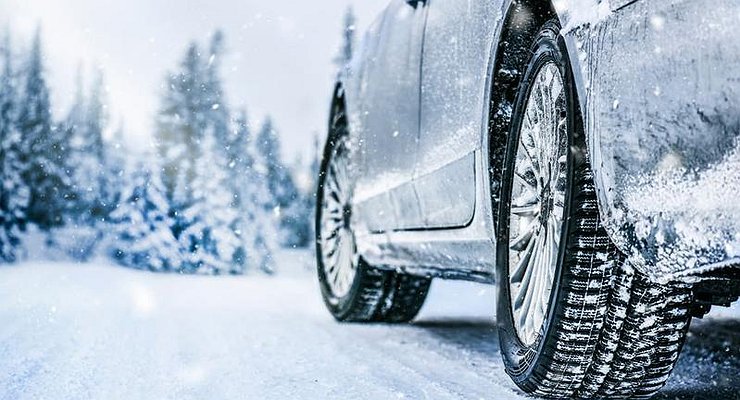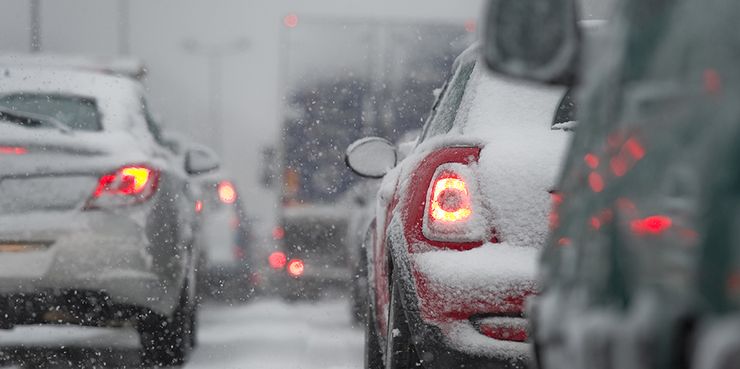Why modern ABS systems don’t save you from accidents
- November 19, 2022
- 0
Why does a car’s ABS not work as efficiently in winter? as we want and very often not only does not protect us from an accident, but, as
Why does a car’s ABS not work as efficiently in winter? as we want and very often not only does not protect us from an accident, but, as

There are typical problems that are typical at the beginning of winter, when the first ice appears under the wheels of cars, but the drivers have not yet adapted to this difficult surface. At the same time, modern cars, even with a low coefficient of friction on the road, can accelerate well. However, every acceleration is followed by deceleration. And right now we are overtaken by problems.
Suppose an obstacle suddenly appears in front of you. You step hard on the brake pedal hoping to get a good deceleration, but there is none. The ABS system “chirps” diligently in an attempt to slow the car down, but its deceleration performance is way below your expectations. You start to get nervous and instinctively step even harder on the pedal. Which has no effect. But if the accident still does not happen, then you can pay attention to one more interesting point. When the car’s speed approaches the speed of a pedestrian, the intensity of the deceleration becomes even less and the car appears to be accelerating on purpose for the last few meters of the braking distance. Apparently just to tickle your nerves. What is going on?
And the fact that the ABS system is specially designed for slippery surfaces does not work effectively on it. This is due to the fact that the principle of operation is based on the response to driver error. The fault is usually associated with excessive pressure on the brake pedal. It leads to the wheels locking up and the car starts to slide limply instead of decelerating effectively. Upon recognizing the problem, the ABS system relieves brake pressure on the locked wheel, allowing it to roll. Then the brake mechanism blocks it again. As a result of this pulsating action during braking, the wheel is in one of three positions of lock, unlock and roll.
In addition, effective deceleration only occurs when the wheel begins to lock. And if there is bare ice under the wheels, the time interval by which it effectively slows down will be very short. Because it takes too long to unlock a heavy and slow wheel with a low coefficient of friction. And during an emergency stop we usually don’t have it. But that is not everything.
Have you ever wondered how the ABS system knows the wheel is locked? A special sensor is responsible for this, which interacts with the gear disc that rotates with the wheel. But the problem with this solution is that at speeds below 4-5 km/h, the sensor can no longer quickly determine whether the wheel is rolling or not. Therefore, the ABS system is turned off, but the driver, continuing to apply pressure to the brake, firmly locks all four wheels. As a result, braking efficiency is greatly reduced. There is a reasonable question how to deal with these shortcomings of ABS? And it’s very simple.
In the case of heavy braking after the first sharp step on the brake pedal and activation of the ABS system, we begin to gently reduce the force on the pedals until the operation of the system from continuous mode to episodic. That is, instead of constant vibrations, you will only feel individual shocks on the pedals. This suggests that all wheels are at the limit of traction and braking has become as efficient as possible. And at the end of the braking distance, when the ABS no longer works, you can switch to impulse braking mode yourself, making short strokes on the pedal as actively as possible. This allows you to considerably shorten the length of the braking distance on winter surfaces. However, to acquire such a skill, it is advisable to undergo special training in driving skills courses.

There are typical problems that are typical at the beginning of winter, when the first ice appears under the wheels of cars, but the drivers have not yet adapted to this difficult surface. At the same time, modern cars, even with a low coefficient of friction on the road, can accelerate well. However, every acceleration is followed by deceleration. And right now we are overtaken by problems.
Suppose an obstacle suddenly appears in front of you. You step hard on the brake pedal hoping to get a good deceleration, but there is none. The ABS system “chirps” diligently in an attempt to slow the car down, but its deceleration performance is way below your expectations. You start to get nervous and instinctively step even harder on the pedal. Which has no effect. But if the accident still does not happen, then you can pay attention to one more interesting point. When the car’s speed approaches the speed of a pedestrian, the intensity of the deceleration becomes even less and the car appears to be accelerating on purpose for the last few meters of the braking distance. Apparently just to tickle your nerves. What is going on?
And the fact that the ABS system is specially designed for slippery surfaces does not work effectively on it. This is due to the fact that the principle of operation is based on the response to driver error. The fault is usually associated with excessive pressure on the brake pedal. It leads to the wheels locking up and the car starts to slide limply instead of decelerating effectively. Upon recognizing the problem, the ABS system relieves brake pressure on the locked wheel, allowing it to roll. Then the brake mechanism blocks it again. As a result of this pulsating action during braking, the wheel is in one of three positions of lock, unlock and roll.
In addition, effective deceleration only occurs when the wheel begins to lock. And if there is bare ice under the wheels, the time interval by which it effectively slows down will be very short. Because it takes too long to unlock a heavy and slow wheel with a low coefficient of friction. And during an emergency stop we usually don’t have it. But that is not everything.
Have you ever wondered how the ABS system knows the wheel is locked? A special sensor is responsible for this, which interacts with the gear disc that rotates with the wheel. But the problem with this solution is that at speeds below 4-5 km/h, the sensor can no longer quickly determine whether the wheel is rolling or not. Therefore, the ABS system is turned off, but the driver, continuing to apply pressure to the brake, firmly locks all four wheels. As a result, braking efficiency is greatly reduced. There is a reasonable question how to deal with these shortcomings of ABS? And it’s very simple.
In the case of heavy braking after the first sharp step on the brake pedal and activation of the ABS system, we begin to gently reduce the force on the pedals until the operation of the system from continuous mode to episodic. That is, instead of constant vibrations, you will only feel individual shocks on the pedals. This suggests that all wheels are at the limit of traction and braking has become as efficient as possible. And at the end of the braking distance, when the ABS no longer works, you can switch to impulse braking mode yourself, making short strokes on the pedal as actively as possible. This allows you to considerably shorten the length of the braking distance on winter surfaces. However, to acquire such a skill, it is advisable to undergo special training in driving skills courses.
Source: Avto Vzglyad
Donald Salinas is an experienced automobile journalist and writer for Div Bracket. He brings his readers the latest news and developments from the world of automobiles, offering a unique and knowledgeable perspective on the latest trends and innovations in the automotive industry.